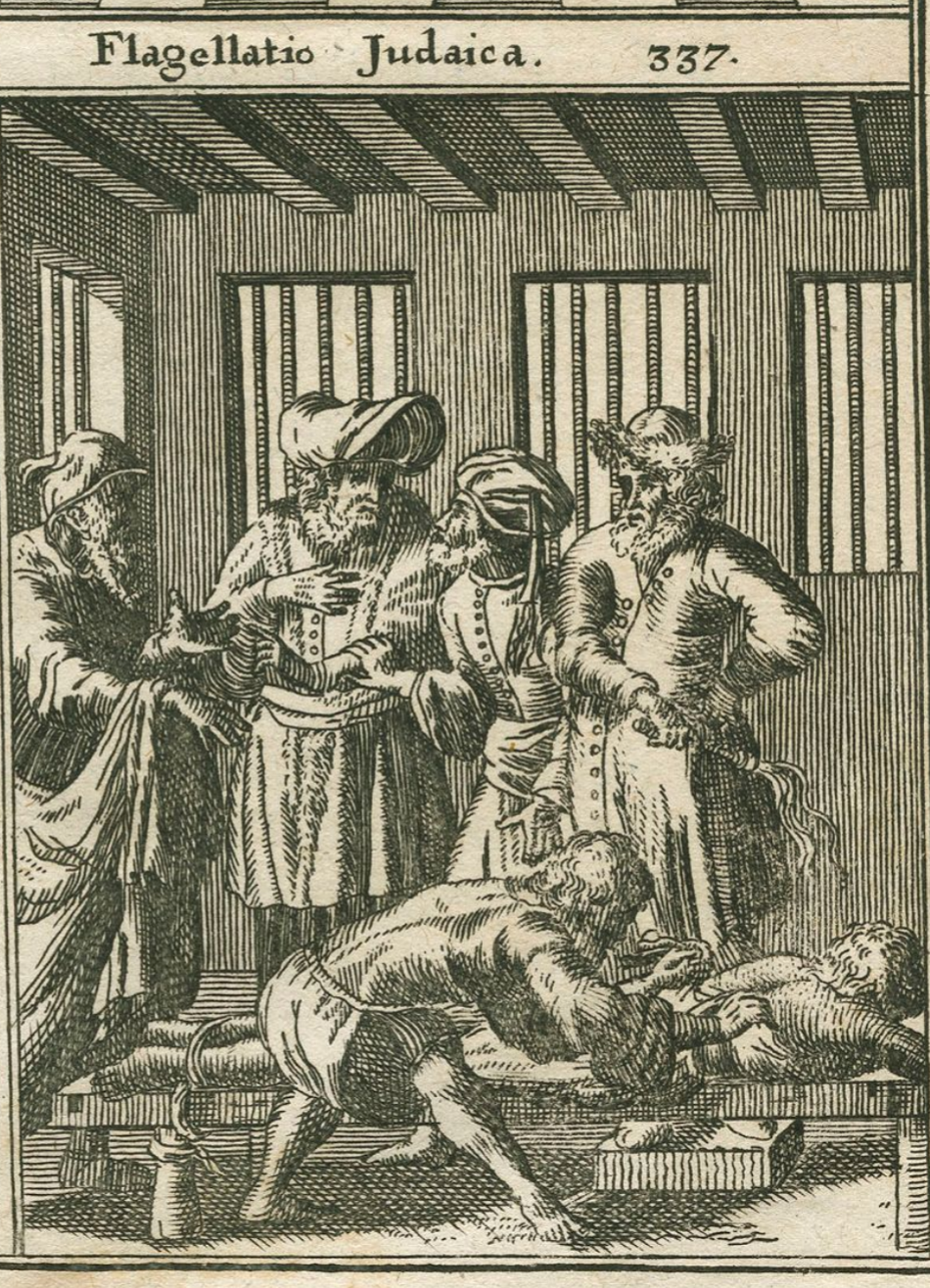|
Makkot
Makot (in Hebrew: מכות) (in English: "Lashes") is a tractate of the Mishnah and Talmud. It is the fifth volume of the order of Nezikin. Makkot deals primarily with laws of the Jewish courts (beis din) and the punishments which they may administer, and may be regarded as a continuation of tractate Sanhedrin, of which it originally formed part. In its scope of application are the topics of: *The false witnesses (''Edim Zomemim'') *The exile in a city of refuge. (''Aray Miklat'') *The lashes administered by the court. (''Makkot'') The third chapter of tractate Makkot enumerates 59 offenses, each entailing lashes. Of these, three are marital sins of priests; four, prohibited inter-marriages; seven, sexual relations of an incestuous nature; eight, violations of dietary laws; twelve, various violations of the negative precepts; twenty-five, abuses of Levitical laws and vows. When the offense has been persisted in, the punishment depends on the number of forewarnings (see Hatra'ah) ... [...More Info...] [...Related Items...] OR: [Wikipedia] [Google] [Baidu] |
Nezikin
''Nezikin'' ( he, נזיקין ''Neziqin'', "Damages") or ''Seder Nezikin'' (, "The Order of Damages") is the fourth Order of the Mishna (also the Tosefta and Talmud). It deals largely with Jewish criminal and civil law and the Jewish court system. Nezikin contains ten volumes (or "tractates"): #''Bava Kamma'' (, ''First Gate'') deals with civil matters, largely damages and compensation. 10 chapters. (See also Shomer) #''Bava Metzia'' (, ''Middle Gate'') deals with civil matters, largely torts and property law. 10 chapters. #''Bava Batra'' (, ''Last Gate'') deals with civil matters, largely land ownership. 10 chapters. #''Sanhedrin'' (, ''The Sanhedrin'') deals with the rules of court proceedings in the Sanhedrin, the death penalty, and other criminal matters. 11 chapters. #''Makkot'' (, ''Lashes'') deals with colluding witnesses, cities of refuge and the punishment of lashes. 3 chapters. #''Shevu'ot'' (, ''Oaths'') deals with the various types of oaths and their consequences ... [...More Info...] [...Related Items...] OR: [Wikipedia] [Google] [Baidu] |
Sanhedrin (tractate)
''Sanhedrin'' () is one of ten tractates of Seder Nezikin (a section of the Talmud that deals with damages, i.e. civil and criminal proceedings). It originally formed one tractate with Makkot, which also deals with criminal law. The Gemara of the tractate is noteworthy as precursors to the development of common law principles, for example the presumption of innocence and the rule that a criminal conviction requires the concurrence of twelve. Summary of Sanhedrin Within Seder Nezikin, the Sanhedrin focuses on questions of jurisdiction, criminal law and punishments. The tractate includes eleven chapters, addressing the following topics: # The different levels of courts and which cases each level presides over # Laws of the high priest and Jewish king and their involvement in court proceedings # Civil suits: acceptable witnesses and judges and the general proceedings # The difference between criminal and civil cases, general proceedings in criminal cases # Court procedures, includ ... [...More Info...] [...Related Items...] OR: [Wikipedia] [Google] [Baidu] |
Mishnah
The Mishnah or the Mishna (; he, מִשְׁנָה, "study by repetition", from the verb ''shanah'' , or "to study and review", also "secondary") is the first major written collection of the Jewish oral traditions which is known as the Oral Torah. It is also the first major work of rabbinic literature. The Mishnah was redacted by Judah ha-Nasi probably in Beit Shearim or Sepphoris at the beginning of the 3rd century CE in a time when, according to the Talmud, the persecution of the Jews and the passage of time raised the possibility that the details of the oral traditions of the Pharisees from the Second Temple period (516 BCE – 70 CE) would be forgotten. Most of the Mishnah is written in Mishnaic Hebrew, but some parts are in Aramaic. The Mishnah consists of six orders (', singular ' ), each containing 7–12 tractates (', singular ' ; lit. "web"), 63 in total, and further subdivided into chapters and paragraphs. The word ''Mishnah'' can also indicate a single paragraph of ... [...More Info...] [...Related Items...] OR: [Wikipedia] [Google] [Baidu] |
Jewish Whipping
Jews ( he, יְהוּדִים, , ) or Jewish people are an ethnoreligious group and nation originating from the Israelites Israelite origins and kingdom: "The first act in the long drama of Jewish history is the age of the Israelites""The people of the Kingdom of Israel and the ethnic and religious group known as the Jewish people that descended from them have been subjected to a number of forced migrations in their history" and Hebrews of historical Israel and Judah. Jewish ethnicity, nationhood, and religion are strongly interrelated, "Historically, the religious and ethnic dimensions of Jewish identity have been closely interwoven. In fact, so closely bound are they, that the traditional Jewish lexicon hardly distinguishes between the two concepts. Jewish religious practice, by definition, was observed exclusively by the Jewish people, and notions of Jewish peoplehood, nation, and community were suffused with faith in the Jewish God, the practice of Jewish (religious) la ... [...More Info...] [...Related Items...] OR: [Wikipedia] [Google] [Baidu] |

